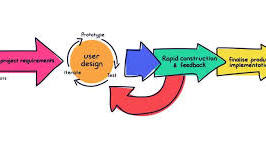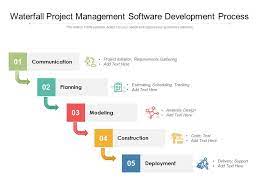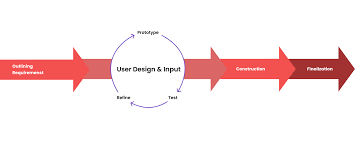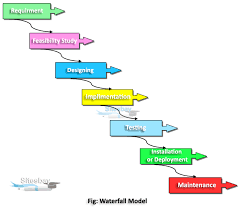Empowering Your Business with Custom Application Development Services
The Power of Custom Application Development Services
In today’s digital age, businesses are constantly seeking ways to stay ahead of the competition and meet the evolving needs of their customers. Custom application development services have emerged as a strategic solution to address these challenges.
Custom applications are tailored software solutions designed to meet specific business requirements. Unlike off-the-shelf software, custom applications are built from the ground up, considering the unique processes and goals of a particular organization.
Benefits of Custom Application Development Services:
- Enhanced Efficiency: Custom applications streamline business processes, automate repetitive tasks, and eliminate manual errors, leading to increased efficiency and productivity.
- Scalability: Custom applications can be easily scaled up or down to accommodate business growth or changing needs without disrupting operations.
- Competitive Advantage: By having tailor-made software that aligns with your business strategy, you can differentiate yourself in the market and gain a competitive edge.
- Bespoke Solutions: Custom applications are built to address your specific challenges and requirements, ensuring a perfect fit for your organization.
- Data Security: With custom applications, you have greater control over data security measures, reducing the risk of breaches or unauthorized access.
Why Choose Custom Application Development Services?
Partnering with a reputable custom application development service provider offers several advantages. These experts have the knowledge and experience to create robust, scalable, and secure solutions that align with your business objectives.
Whether you need a customer relationship management (CRM) system, an enterprise resource planning (ERP) solution, or a mobile application for your business, custom application development services can bring your vision to life.
The Future of Business Innovation
In conclusion, custom application development services play a crucial role in driving innovation and digital transformation across industries. By investing in bespoke software solutions tailored to your needs, you can unlock new opportunities for growth and success in today’s competitive landscape.
9 Essential Tips for Successful Custom Application Development
- Clearly define the requirements and objectives of the custom application.
- Choose a reliable and experienced development team or company.
- Ensure effective communication with the developers throughout the project.
- Regularly test and review the application to identify and fix any issues early on.
- Prioritize security measures to protect sensitive data within the custom application.
- Consider scalability to accommodate future growth and changes in user demand.
- Document all aspects of the development process for future reference and maintenance.
- Provide training and support for end-users to ensure successful adoption of the custom application.
- Continuously gather feedback from users to make improvements and updates as needed.
Clearly define the requirements and objectives of the custom application.
To ensure the success of custom application development services, it is essential to clearly define the requirements and objectives of the project from the outset. By establishing a detailed roadmap that outlines the specific functionalities, features, and goals of the custom application, developers can align their efforts with the client’s vision and expectations. This clarity not only streamlines the development process but also helps prevent misunderstandings and scope creep, ultimately leading to a more efficient and effective outcome that meets the client’s needs.
Choose a reliable and experienced development team or company.
When embarking on custom application development services, it is essential to prioritize selecting a reliable and experienced development team or company. Partnering with professionals who have a proven track record in delivering high-quality custom solutions can significantly impact the success of your project. A reputable team will not only possess the technical expertise to bring your vision to life but also offer valuable insights, guidance, and support throughout the development process. By choosing a reliable and experienced team, you can ensure that your custom application meets your requirements, deadlines, and quality standards.
Ensure effective communication with the developers throughout the project.
Effective communication with developers throughout a custom application development project is essential for its success. Clear and open communication helps ensure that the developers understand the project requirements, goals, and any changes that may arise during the development process. By maintaining a constant dialogue with the developers, clients can provide feedback, address concerns promptly, and make informed decisions to steer the project in the right direction. This collaborative approach fosters transparency, builds trust, and ultimately results in a custom application that meets or exceeds expectations.
Regularly test and review the application to identify and fix any issues early on.
Regularly testing and reviewing the custom application is a critical aspect of ensuring its success. By conducting thorough tests and reviews on a consistent basis, potential issues can be identified and addressed early in the development process. This proactive approach not only helps in maintaining the application’s performance and functionality but also minimizes the risk of encountering major problems later on. Continuous testing and review enable developers to make necessary adjustments, enhancements, and fixes promptly, ultimately leading to a more robust and reliable custom application that meets the client’s requirements effectively.
Prioritize security measures to protect sensitive data within the custom application.
When considering custom application development services, it is crucial to prioritize security measures to safeguard sensitive data stored within the application. Implementing robust security protocols and encryption techniques can help prevent unauthorized access and data breaches, ensuring the confidentiality and integrity of valuable information. By prioritizing security measures from the initial stages of development, businesses can build trust with their users and demonstrate a commitment to protecting sensitive data in their custom applications.
Consider scalability to accommodate future growth and changes in user demand.
When engaging in custom application development services, it is essential to consider scalability to accommodate future growth and changes in user demand. By designing applications with scalability in mind, businesses can easily expand their systems to handle increased workload or user traffic without the need for a complete overhaul. This proactive approach ensures that the software can adapt to evolving requirements and maintain optimal performance as the organization grows.
Document all aspects of the development process for future reference and maintenance.
It is essential to document all aspects of the custom application development process for future reference and maintenance purposes. Comprehensive documentation serves as a valuable resource for understanding the system’s architecture, functionality, and codebase. By documenting each stage of development, including requirements, design decisions, implementation details, and testing procedures, developers and maintenance teams can easily troubleshoot issues, make enhancements, and ensure the application’s long-term sustainability. Clear documentation also facilitates knowledge transfer among team members and helps maintain consistency in the software development lifecycle.
Provide training and support for end-users to ensure successful adoption of the custom application.
To ensure the successful adoption of a custom application, it is crucial to provide comprehensive training and ongoing support for end-users. By offering training sessions tailored to the specific functionalities of the application and providing accessible support resources, organizations can empower their users to effectively utilize the new software. This approach not only enhances user proficiency but also boosts overall productivity and maximizes the return on investment in custom application development services.
Continuously gather feedback from users to make improvements and updates as needed.
To ensure the success of custom application development services, it is essential to continuously gather feedback from users. By listening to user input and insights, developers can identify areas for improvement and make necessary updates to enhance the application’s functionality and user experience. This iterative process of feedback collection and implementation not only fosters user satisfaction but also allows for the adaptation of the application to changing needs and preferences, ultimately leading to a more effective and valuable software solution.







